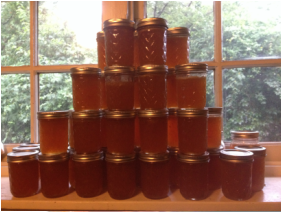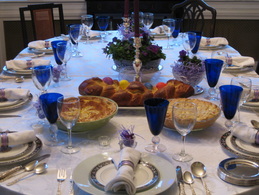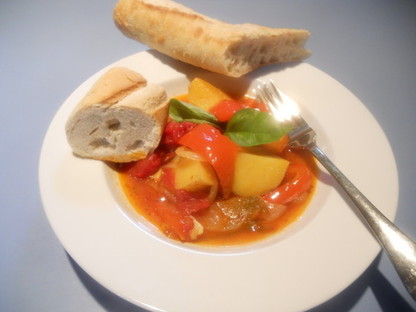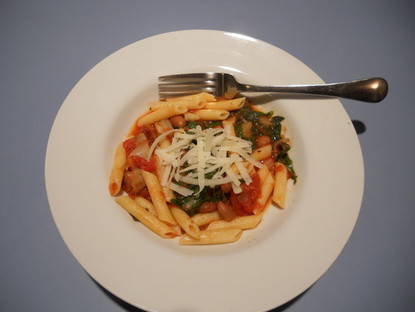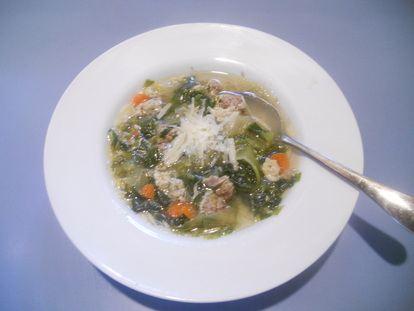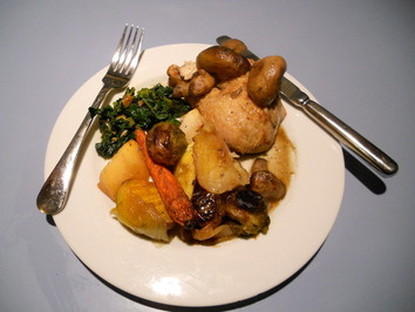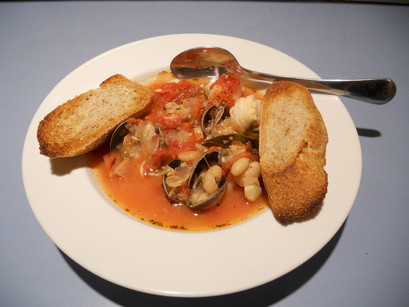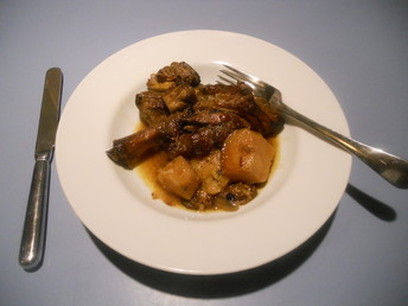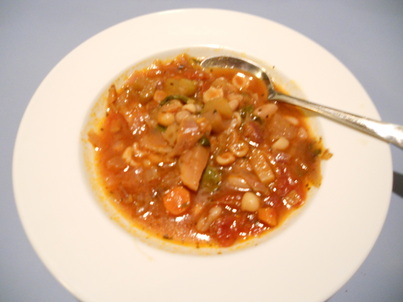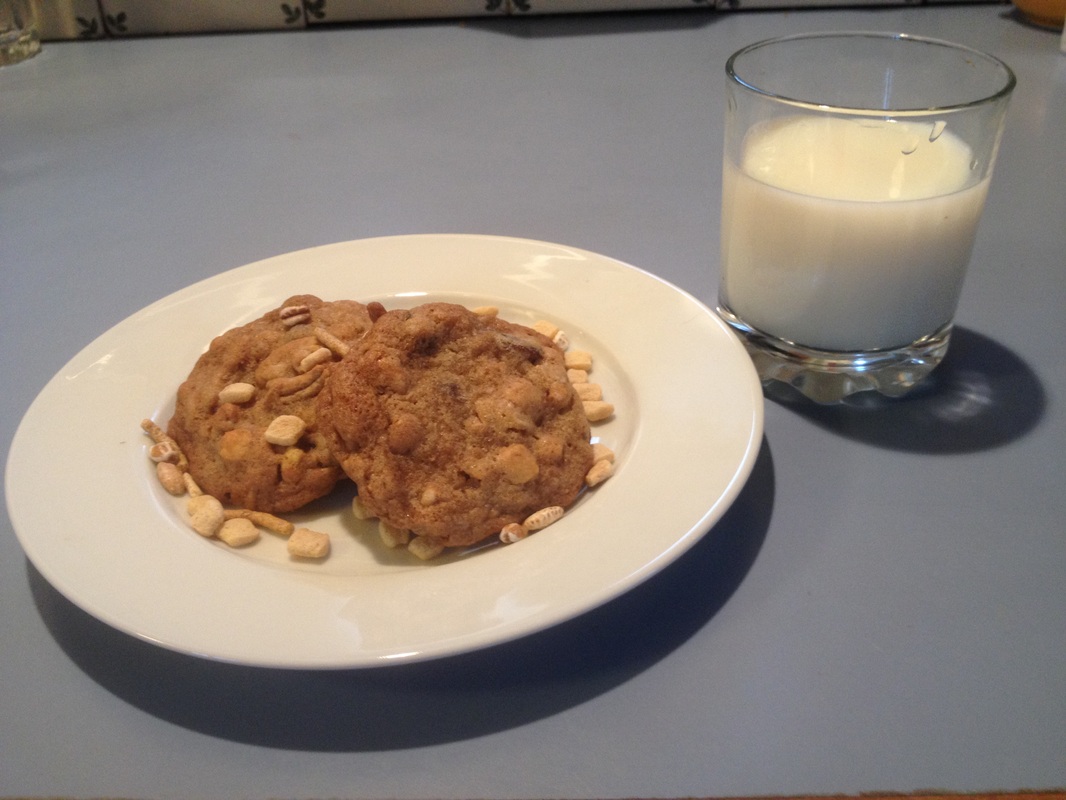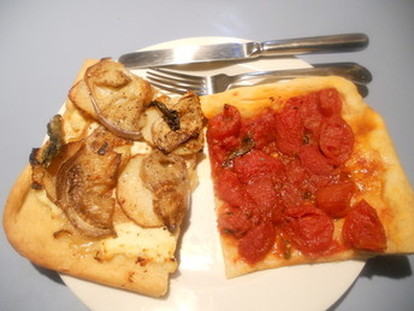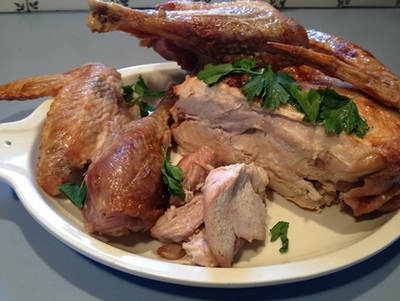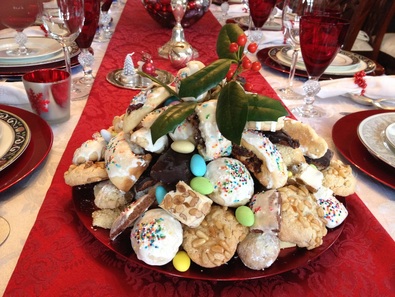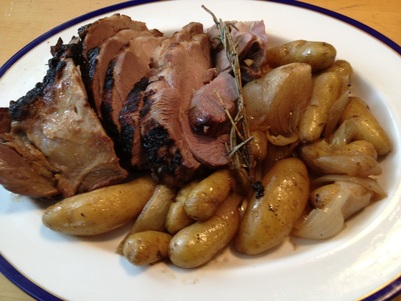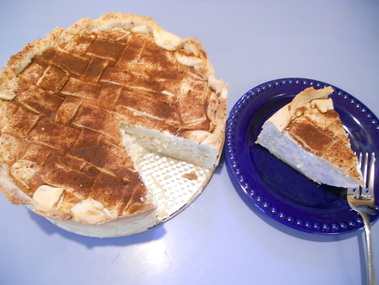_____________________________________________________________________________________________________________________________
Italian American Recipe Index
|
The Food Table
Preserving the Italian American Kitchen (and other recipes) Illustrated Italian American recipes and history with Personal Memories When you grow up eating from the food table of the Italian American Kitchen you grow up living the fullest experience of the pleasures of food. In the Italian American Kitchen not only does food begin and end the day, food marks the beginning, the middle and the end of life. Food is the ceremonial sacrament in the liturgy of life's transitions. Food surrounds and anchors the rituals that mark the passage from birth to childhood, from childhood to adulthood, and from adulthood to old age. Food is the traditional offering on the altar of the home that is The Food Table. What follows on these pages are many illustrated recipes and history for Italian American foods with personal memories. My goal is to preserve the Italian American Kitchen. In some cases, the illustrated recipes that these pages recall are clear and distinct personal memories. For other illustrated recipes on The Food Table I have tried to reconstruct dishes whose preparation I recall only vaguely. As often as possible I have gone beyond my personal memories and researched the history of traditional Italian American foods in numerous cookbooks and at sites on Google Italy and other international sites. While The Food TabIe mission is the preservation of recipes from the Italian American Kitchen, I have also included many other recipes that derive from various other sources.To include recipes that derive from other ethnic cuisines are actually in keeping with The Food Table where I grew up. In our kitchen almost anything was possible,not just foods with Italian American recipes. We had foods from many other traditions. I think a major influence was television. A significant influence was Julia Child.
Julia Child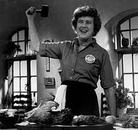
On our small, rounded screen kitchen TV, Julia Child’s French Chef was a weekly visitor. Many of her French suggestions were part of The Food Table in our house. There were also influences that were not from television. Greek recipes also came to our Italian American Kitchen, but I don’t know from where: perhaps from newspapers of magazines.
On our Food Table you might find any number of innovative foods or recipes. My father, who did the shopping, came home with anything that was new. I remember his worst innovation back in the 60’s. He came home with soy bean steaks. The memory of their awful taste still echoes in my mouth and nose. Was that innovation ever a mistake! In keeping with the tradition of being open to new foods and as a complement to preserving the Italian American Kitchen, I include recipes developed from any number of other sources.
History of Traditional Italian American Foods
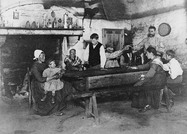 Italian Peasant Table
The Italian American Kitchen shared its Food Table as early as Colonial Times. Jefferson learned much from Italy and introduced America to macaroni
http://www.monticello.org/site/research-and-collections/macaroni and Lorenzo da Ponte, Mozart’s librettist, ran a grocery store in Pennsylvania.The greatest influence of The Italian American Kitchen however, began with the great immigration. In the Italian American family at the end of the 19th century and the beginning of the 20th the preparation and serving of food at the table was a ritual akin to that of the rites of the church. While a small number of Italians had immigrated to America in colonial times, the greatest number, over four million, arrived between 1880 and 1920. Most of these Italians came from two regions: the Mezzogiono, the area south of Rome, and from the island of Sicily.Exactly what the immigrants’ foods and methods were in Italy is not so easy to determine. What we do know is that in America the foods and ingredients were not the same as in Naples or Palermo. Italian vegetables were not common until Italian immigrants began to grow them. Cuts and types of meat in America, particularly the use of beef, varied from Italy’s preference for chicken and lamb and veal. For the 19th century Italian immigrant, the available food sources in the new America would certainly be different from what they knew in the old country. How did the immigrant quarry worker or coal miner recreate the peasant ovens of the Cilento or the Abruzzo? How did canned or semi-prepared ingredients replace the field fresh and sea caught vitality of Sicily or Naples? Still, the newly arrived “greenhorns” (as my family called Italian immigrants) learned to accommodate their traditional Italian foods to what was available in their new home country.
One of the most distinctive differences in the Italian American Kitchen was the extensive use of a very thick tomato sauce on various dishes: a sauce that even now is not known in Italy. Sunday Gravy
 http://www.dangelobros.com/
I In the Italian American kitchen, when they spoke English, they called this sauce “gravy,” perhaps because it was meat based or, perhaps because of a mistranslation. Red sauce covered or infused almost everything from spaghetti to vegetables to braised meats.In America,
Visit My Other Site:
|
Among non-Italians, and even among second and third generation Italians, the red sauce dishes became an Italian American recipe tradition and Food Table standard. The red sauce influence was so strong that, in my estimation, it became a plague that now manifests itself in the plethora of commercial prepared “Italian” sauces, most of which are little more than tomato stews of starch, sugar and salt.
Personal Memories
When I was growing up in the 1950’s I was the fourth generation of Italian descent. My great-grandfather arrived in American on board the S.S. India on May 1st, 1885. His son, my grandfather, was a little boy and quickly learned English. My father, aunts and uncles, born in America spoke not a word of Italian. Yet, they remembered the foods they had lived and so were part of Preserving the Italian American Kitchen. So, while Italian as a family language had disappeared, many traditions and Italian American recipes remained. From early on even to the time my father, the men did the shopping.The men made the selections for the Food Table. The women did the cooking.
Just before the War, there was another change in many Italian American families: the exit from the city and the migration to the suburbs. While most of my aunts and uncles made the move some remained in South Philadelphia. One uncle was a prosperous pharmacist who was included in the book of Prominent Philadelphians. Another uncle by marriage was a working class shoemaker. One went to the opera. One watched the Phillies. Both were musicians. Both spoke the language of the Italian American Kitchen. 9th Street, Philadelphia Photo from Temple Univ. Archives
In my personal memories I fondly recall how my suburban family would visit my city cousins at least once every week especially my Aunt Annie’s (we said Aunt Nannie). The moment you entered the vestibule of her South Philadelphia home the fragrant sweetness of tomato and garlic and meats would embrace you entirely Sometimes my Uncle Henry (we pronounced it, "Hendry"), the shoemaker, would take me with him to shop on 9th Street.In those days, over fifty years ago, the street was lined with gray wooden crates filled with squawking chickens. Live lambs bleated in their stalls. Meats of every kind hung from hooks and the big wheeled wooden push carts bent under the weight of the fruits and vegetables.
Aunt Annie, was the consummate cook. She was a big woman, the stereotypical Italian “mamma” with a print apron embracing a wide girth. You saw her from behind. Her eyes faced the stove and oven. You saw her full arms and their fullness fluttering as they mixed and stirred and throttled the innards of the pots on the stove. You watched Aunt Annie from our seats at the kitchen table. We sat at the table mesmerized. She was big. The food was big. To sit at her Food Table was to nest in security and comfort and warmth.
Then, suddenly she would turn. Pot in towel covered hands she approached us.Moving to the table she raised the pot. It eclipsed our view. Suddenly the pot struck the table and her full apron print breasts filled my view. An arm and hand the spoon or fork, laden with sweet or salty delights caressed the mouth and seduced the senses into complete submission. Now, at my age, all the old folks are gone. It’s been almost one hundred and fifty years since my first Italian ancestors came to this country from the Cilento on board the SS. India, a steam and sail liner. The Cilento
The traditional Italian foods and recipes that my ancestors brought to their new American tables from their homes in Italy are all but lost. Even the Italian American Kitchen of their children, the kitchen of my aunts and uncles, is fast disappearing. For some time I’ve been reviewing personal memories to recall and compile traditional Italian American foods from childhood. I wanted to rescue them from oblivion. I wanted to keep them alive not only in my own memory but I wanted to pass the memory on to my children. So, with this in mind I have created The Food Table, Preserving the Italian American Kitchen, Illustrated Recipes and History of Traditional Italian American Foods from Personal Memories.
Below the "LINKS" is an index of illustrated recipes for traditional Italian American Foods that will direct you to specific recipes.The index covers salads, vegetables, sides, soups, pasta, chicken, fowl, rabbit, fish, shellfish, beef, pork, lamb, veal, meatless, pizza, bread, cookies, cakes and pies.In addition to Italian American recipes, the Food Table also includes recipes from other cultures and traditions. In the Italian American love for good eating, everyone is invited to The Food Table.
Buon Appetito!
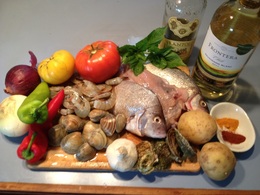 Fish stew, zuppa di pesci
|
________________________________________________________________________________________________________________________________
Index of Illustrated Recipes,Traditional Italian American Foods and Personal Memories
by Tony Devaney Morinelli
Holidays
___________________________________________________________________________________________________________________________________________________
